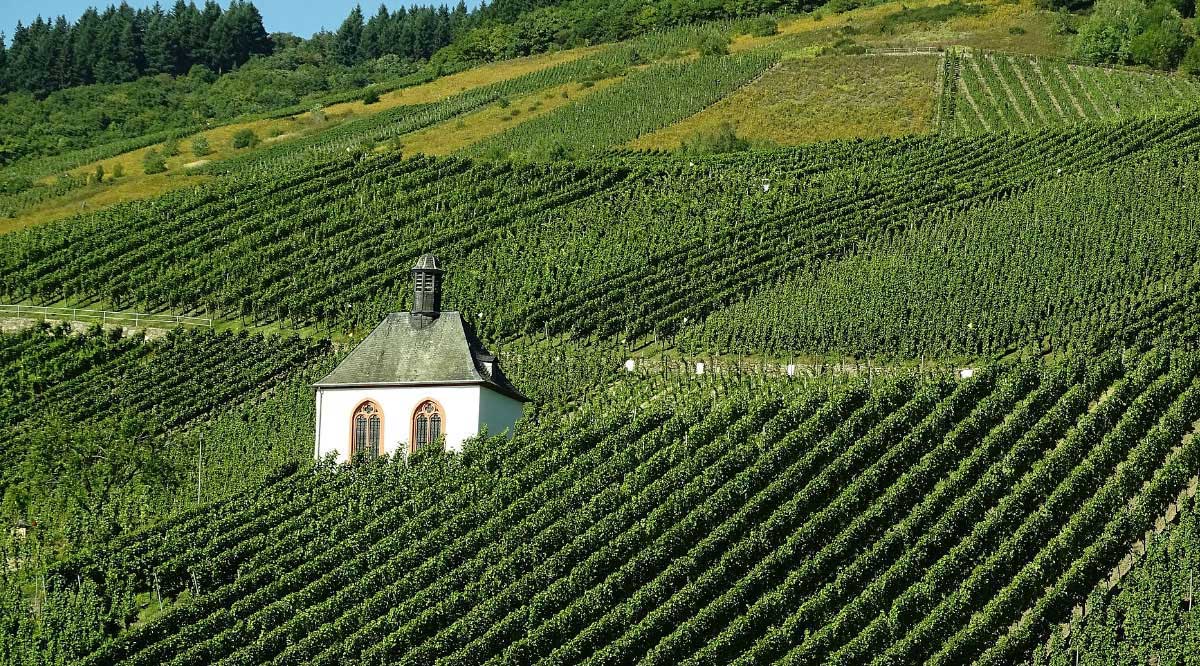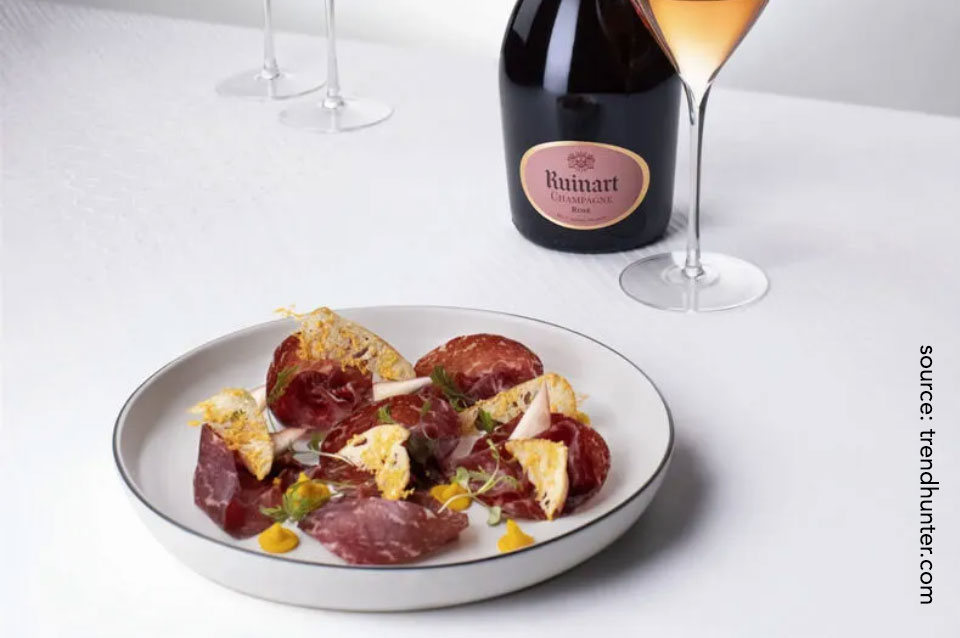
Why French wines? Understand their history and strengthen your wine branding.
French wine tradition, innovations & soulful authenticity
The French say, “Quand le vin est tiré, il faut le boire,” which means, “When the wine is poured, it must be drunk.” So let’s discover what are the latest wine trends, the best areas in France to grow wine and how organic wine became so loved in Bordeaux.
What makes French wine so appreciated?
There isn’t just one factor, but a few reasons combined: the special geology, the temperate climate (cool & warm zones), the search for the best grapes, the fertile soil, the standards of good growing practices and the hard work of the dedicated people from various vineyards.

Wine history - French wine types
The wine was first domesticated 9,000 years ago in China. In 425 BC, wine was brought to the Mediterranean areas. France embraced this wonderful drink and now it would be unimaginable to have a meal without wine. It is a mandatory part of the French cuisine.
Napoleon planted oak trees so that warships could be made from them 400 years later. Instead, these gorgeous trees are used to make barrels to store wine. This practice enhance the flavor and it gives character.
There are two french wine classifications: the varietals and the region of origin. Firstly, the cépage (varietals) identifies the wine by the type of grape used by the vineyard. Secondly, the terroir (land-based) highlights the geographical origin of the wine, where the wines are from and the “nectar” is produced.
Historic trends reveal French winemakers substantially favoring terroir over cépage. However, this tendency is kind of changing right now, considering the wine market becomes more competitive and a mix between the two is better for marketing.

French wine regions
France has hundreds of wine regions. Each is known for certain types of wine and they all use different growing techniques with different results. Let's explore the french wine country.
Loire Valley. The Loire Valley, a cooler-climate region in northern France, is appreciated for its refreshing white wines like Sauvignon Blanc and Chenin Blanc. Loire Valley wines have higher acidity and a lighter body, they are very good for many food pairings.
Bordeaux. The Bordeaux region is famous for its exceptional red wine, but it also produces sweet white wines and dry whites. The focus is on high-quality, expensive wines.
Champagne. The Champagne region is well known for its great sparkling wines. You will find here strict guidelines on grape percentage and vineyard rules.
Burgundy. Burgundy has a mix of cool and warm climates. Burgundy excels at wines made from Chardonnay and Pinot Noir grapes.
Provence. Provence has the longest history for winemaking. This long history gives the region a certain winemaking prestige that makes it known for its full-flavored rosé wine.
Rhone Valley. The Rhone Valley has warmer yet still temperate climate gives it a mythical status for white and red wines like Hermitage, Chateauneuf-du-Pape, and Côte-Rôtie.

Redefine Wine Branding & Label Design.
Our branding studio will craft a unique visual identity, strategy, logo or packaging design for your wine brand.
Explore Wine & Alcohol Branding
Wine branding trends
The French wine industry is a source of national revenue and pride. And to boost the sales, the wine trends are changing to adapt to a globalised market. Labeling practices are in focus of professionals in the field. A sophisticated-looking bottle of French wine, a memorable french wine name and a stylish french wine label will attract customers & wine lovers both in stores & online markets.
Wine branding and marketing should be focusing on both the region (Burgundy, Bordeaux, Médoc), and on specific grape types (Chardonnay, Merlot, Cabernet, or Malbec) to convince the customers to choose a certain french wine brand and become a loyal buyer.
Organic wine becomes more than just a passing trend
In the last couple of years organic wine brands became more and more appreciated by customers. Even if we talk about red, white and rose wines, sparkling wines or crémant mellow or sweet wines, no matter the French region were it is grown, wine can be organic.
Consumers increased their appetite for these types of wine for mainly two reasons: health & environment friendly solutions. The French producers are looking for new ways and opportunities in this growing market. The French volume of sales for organic French wine will soon exceed €1 billion. The new direction is inspiring many wine startups to develop wine tech innovations. Organic wine box should highlight this attractive quality.
The organic trend has now reached Bordeaux. Even with the weather conditions, the organic logo starts to appear on more and more bottles from the vineyards of Gironde. The organic farming is making its presence not only in small artisan estates but also in great châteaux from Médoc region like in Durfort Vivens and Ferrière châteaux.
Are organic wines a question of money?

Organic wines are selling. The owners couldn’t go without noticing it. Many owners start embracing bio dynamics, which is even more hard to do than just organic. They are convinced the organic wine is not only good for the environment but also for their business. What a great combination! Bordeaux seems to fall in love with organic and so did the audience. Organic wine delivery is also growing in popularity so customers can quickly enjoy an organic french wine.
How do customers like to choose their wine?

The wine industry consensus is that the average consumer these days is more likely to select his wine based on its cépage and the brand that the winemaker has developed than on the wine’s terroir. That’s why the wine label design needs to be specific about these elements. Usually, a cépage wine is targeted to consumers who desire to spend a pleasant moment with friends, while a terroir wine is more likely to be purchased for more important celebrations in one’s life. You need to always follow wine industry news and have the best wine industry advisor so you can adapt quickly to customers needs.
Wine branding strategies to increase the audience.

The winery industry studies show that consumers drink less and have become more demanding. They are looking for a high-quality wine at a fair price. Wine makers need to educate consumers who are interested in wine but lack knowledge. So, building a strong wine brand is more important than ever before.
A good wine branding strategy allows winemakers to move from very traditional, sober French labels and bottles, towards more modern logos and progressive bottle designs to build the wine’s brand identity. Wine packaging becomes a blend between traditional and modern. This wine marketing strategy is obvious in many attractive wine labels displayed in stores nowadays.
"Wine is sunlight held together by water." Galileo, Italian astronomer, physicist and engineer

Marketing for wine using a great dish

Discover 5 Famous French Wines
2. Louis Roederer, Cristal - Grape varieties: 40% Chardonnay and 60% Pinot Noir
3. Chateau La Mission Haut-Brion - Grape varieties: white wine concentrated with scents of truffle, smoke, earth, tobacco,spices
4. Domaine de-la Romanee Conti - red & white wines to reflect the aroma of the fruit of old vines
5. Chateau Haut Bailly - red blends with Cabernet Sauvignon 65%, Merlot 25% and Cabernet Franc 10%

